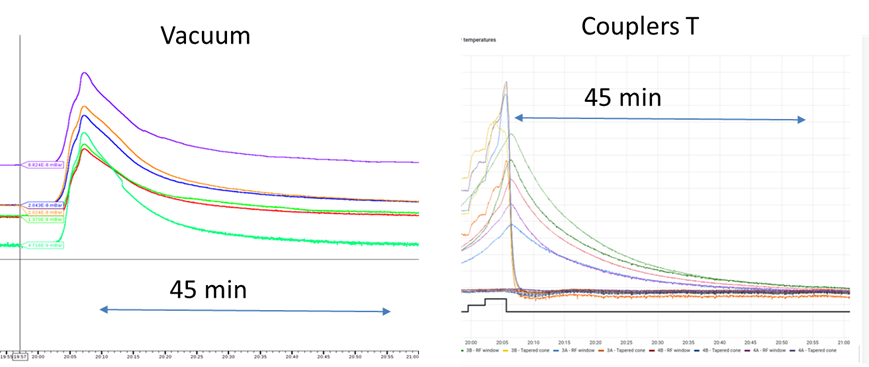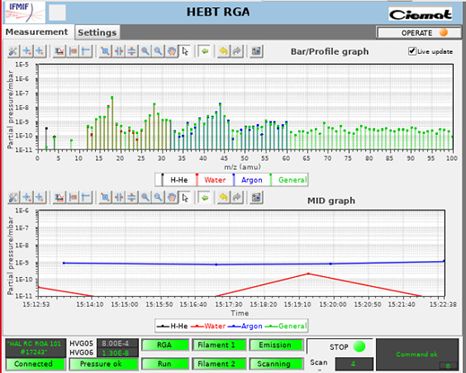Injector conditioning campaign
After several long runs (each one of ~10hours of CW operation) the Injector CW campaign with the 11mm PE is now considered completed. The last few days of operation were dedicated to collect data for the beam profile measurements and their analyses are on-going (see below profiles). As the RFQ conditioning campaign needs to be extended, the way forward for the injector CW campaign was agreed with CEA as follows. At first the validation of the new EMU will take place with its calibration using the 11mm PE. Then, following a short maintenance of the source (also changing the BN disk), the campaign will proceed with the 12mm PE with the goal to repeat the CW operation. The target in any case is to complete this CW campaign by mid-June, when RF-RFQ conditioning should also be completed.
Extracted current=142-145 mA, Intermediate Electrode Voltage=18 kV

RF-RFQ conditioning campaign
While the RF-RFQ conditioning reached 15%DC at nominal (for deuteron acceleration) cavity voltage of 132kV and 35%DC at 80% level cavity voltage of 106kV, it was stopped on March 30 due to vacuum interlock events. Preliminary investigation pointed out that the time needed by the system to recover the RFQ base vacuum after the vacuum peaks follows the same trend than the temperatures measured in correspondence of the RFQ couplers ceramic windows (see below graphs). Consequently, leaks at the RF couplers viton O-rings are suspected. Intensive leak checks have been performed, first by using Kr gas sprayed in pockets around the windows to be detected by the RFQ RGAs and then by using Helium, following a more standard He leak test by isolating the cryopump and using a mobile trolley. Following the increase of DC during the last months of conditioning campaign, the ceramic windows may also have experienced metallization. Further inspection of the couplers will tell us more if changing ceramic windows and O-rings should be considered. Even though spares are available on-site, the diagnosis of the issue (with the great support of INFN) is our first focus to clearly identify the coupler to be opened because the intervention will be quite invasive (with the need to disassemble the coaxial lines and disconnect them in the pit for couplers located on the north side).
HEBT/BD commissioning
The remote sessions with CIEMAT are progressing well. In particular the new radiation resistant RGA installed in the HEBT is now fully operative (see the below screenshot of its OPI). The noise issues at the HAL02 accelerometer in the BD was solved and the final debugging of the mass flow controllers and cRIO is on-going. The monitoring of the BPMs is ongoing after the new PV gateway service through the Data-diode was started. It appears that an overrun memory issue was causing the segmentation fault observed in the last BPMs operations. These activities will speed up when two CIEMAT colleagues together with the 3 new colleagues from Granada University will join us on-site as soon as May.
Control System
Meanwhile, the Control system supported the modification of the OPI for the isolation valve of the injector vacuum sector 2, while the modification of the chopper interlock module is on-going.
Disclaimer: the information reported is not meant to be technically complete and doesn’t cover all the activities currently carried out on LIPAc.





